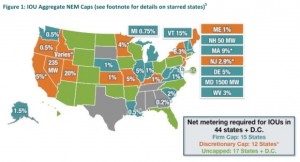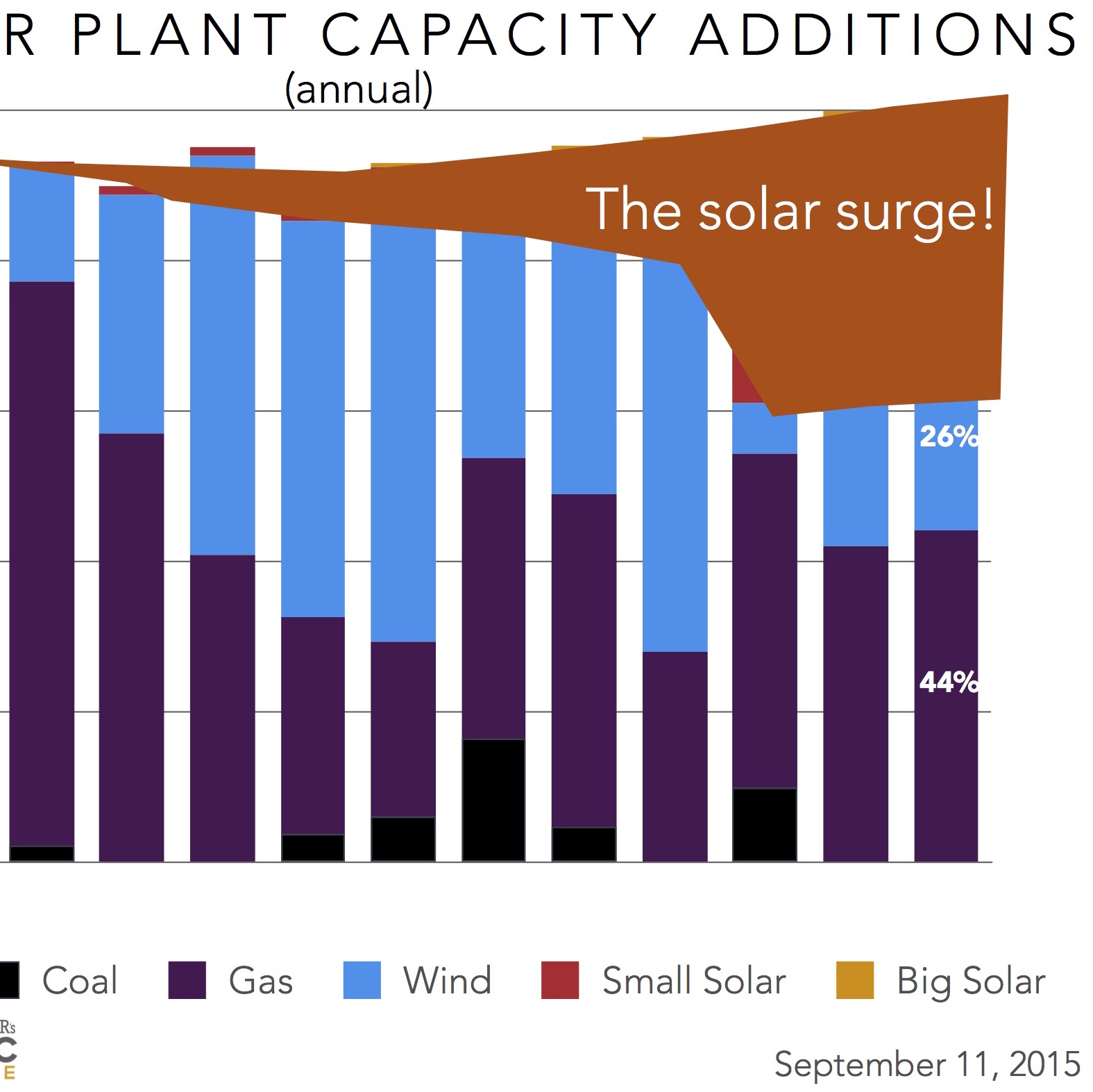This week in Democratic Energy:
California utilities attempt to reduce residential solar, much to solar company ire.
Solar energy amendment fight heading to Florida Supreme Court.
Inefficient Ohio utility seeks to save money on coal power by passing the cost onto their customers.
Featured Stories:
This Ohio utility has an innovative plan to save coal power: force customers to buy it by David Roberts, Vox
A power utility in Ohio is attempting to shaft its own customers in a manner so shameless as to defy description. Yet describe it we must, for it represents everything backward and perverse in the electricity sector and reveals that the interests of the institutions that provide electricity have come fundamentally out of sync with the interests of the citizens who depend on it.
Plus it’s pretty funny, in a morbid sort of way. You almost have to admire the chutzpah.
Solar energy means jobs, savings, and a low-cost future (Infographic) by John Farrell, CleanTechnica
Sunny San Diego fights new utility charges on rooftop solar by Morgan Lee, The San Diego Union Tribune
California utility regulators are reconsidering the current “net metering” tariff that provides bill credits for solar energy at the full retail electricity rate. SDG&E says grid-connected solar customers are avoiding their fair share of costs for infrastructure and utility programs, forcing it to increase bills for non-solar customers.
Attorneys for the city acknowledged the need for all customers to support the grid that serves them, but said the new charges by SDG&E “would be discouraging to sustained growth” of solar. The city stressed its own plans to offset more city government energy demands with solar, as well as an interest in keeping open cost-effective options for residents and businesses in San Diego.
Solar amendment battle to move to Supreme Court stage by Jim Turner, The Palm Beach Post
Democratic Energy Around the Nation:
California
Will California put the brakes on residential solar’s biggest market? by Travis Hoium, The Motley Fool
Solar drops California fight to pick another with utilities by Mark Chediak, The San Diego Source
Sunny San Diego fights new utility charges on rooftop solar by Morgan Lee, The San Diego Union Tribune
California utility regulators are reconsidering the current “net metering” tariff that provides bill credits for solar energy at the full retail electricity rate. SDG&E says grid-connected solar customers are avoiding their fair share of costs for infrastructure and utility programs, forcing it to increase bills for non-solar customers.
Attorneys for the city acknowledged the need for all customers to support the grid that serves them, but said the new charges by SDG&E “would be discouraging to sustained growth” of solar. The city stressed its own plans to offset more city government energy demands with solar, as well as an interest in keeping open cost-effective options for residents and businesses in San Diego.
Lompoc City Council approves streamlined solar power plan by Kenny Lindberg, Lompoc Record
Colorado
Aspen is third U.S. city to reach 100% renewable energy by Erica Robbie, The Aspen Times
Florida
Solar energy fight heating up in Florida by John Kennedy, The Palm Beach Post
Solar amendment battle to move to Supreme Court stage by Jim Turner, The Palm Beach Post
Georgia
Reducing the cost of solar in Georgia with crowdsourcing by Derek Markham, CleanTechnica
Illinois
Solar array helps power Geneseo by Lisa Depies, Geneseo Republic
Kentucky
Solar campaign fuels interest in Louisville by James Bruggers, The Courier Journal
Michigan
Bipartisan critics call renewable energy bill ‘monopoly control’ by Jake Neher, Michigan Public Radio
Nevada
NV Energy needs to let customers take advantage of important resource by Judy Treichel, The Las Vegas Sun
Ohio
This Ohio utility has an innovative plan to save coal power: force customers to buy it by David Roberts, Vox
A power utility in Ohio is attempting to shaft its own customers in a manner so shameless as to defy description. Yet describe it we must, for it represents everything backward and perverse in the electricity sector and reveals that the interests of the institutions that provide electricity have come fundamentally out of sync with the interests of the citizens who depend on it.
Plus it’s pretty funny, in a morbid sort of way. You almost have to admire the chutzpah.
Vermont
Group says IRS ruling could promote community solar projects by Wilson Ring, The Concord Monitor
Washington D.C.
In rejection order, DC regulators cite Exelon’s ‘heavy hand’ in Pepco future by Kelly Andrejasich
Nationwide Democratic Energy News:
August Net Metering news round-up by PV Solar Magazine
Better health a key benefit of renewables, study says by Bobby Magill, Climate Central
Review of Net Metering studies finds utilities underpaying for solar electricity by Derek Markham, CleanTechnica
The review, from the Environment America Research and Policy Center, looked at 11 previous studies of net metering’s effects on both the grid and on society as a whole, all of which found that owners of grid-connected solar arrays offered net benefits to the electricity system, including reduced environmental compliance costs, reduced costs in capital investments, and in avoided energy costs. In particular, the studies determined the median value of solar power as being “nearly 17 cents per unit,” which contrasts with the US average retail electricity rate of about 12 cents per kWh, which means that not only has solar net metering not been harmful to markets, but that utilities have actually been underpaying for the use of this solar electricity.
Community solar investors could qualify for federal tax credits, IRS ruling indicates by Robert Walton, Utility Dive
The growing link between Energy Efficiency and Economic Development by John Spencer, Governing
Top 10 Solar States Have Strong Renewable Energy Policies by Solar Industry Magazine
States are doing a poor job of measuring Net-Metering caps, according to report by Katherine Tweed, GreenTech Media
Reporting on net-metering caps varies widely between states. Some have to report on whether the cap has been hit, but many do not. Because accurate figures on utility peak load often are not shared with third parties, it can be difficult for outsiders to calculate how close the caps are to being met.
The study recommends a few data points that should be common across utilities and states:
- First, reports should specify the aggregate net-metering cap in megawatts, rather than some other measure.
- As utilities get closer to reaching caps, notifications should be sent to regulators to consider if a change of policy is needed before the cap is actually hit.
- Reporting on the number of net-metered systems is not enough. Instead, reports should include aggregate capacity of all active and pending systems.






